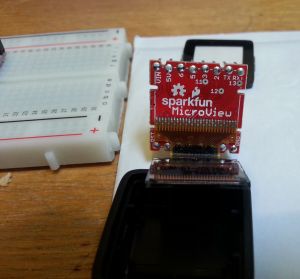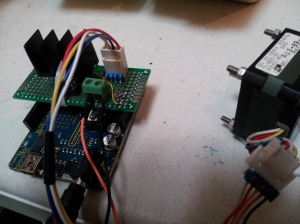fresh from FTDI’s indiegogo project, my CleO arrived last week, but I had to wait until last Friday for the necessary software to be available from the CleOstuff website .
Now it is going, here is a demo using the NerO card as the Arduino-style processor. The stopwatch is one of the software items that comes with the CleO Arduino libraries. A neat demo of the touch screen. The rear view shoes the NerO fitted with long pin sockets that plug into the CleO device. I need to read up one the CleO commands and arguments to do something interesting with it!
FTDI have set up a CleO forum to get users together and exchange info and queries for Fred Dart and FTDI.






